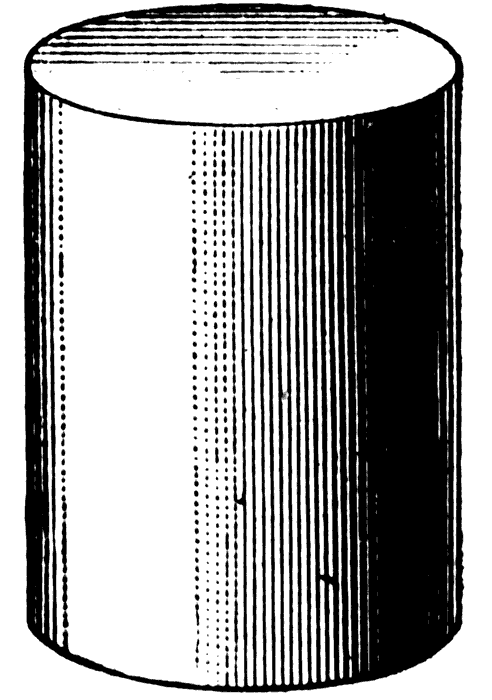|
|
LITR 5439
Literary & Historical Utopias
|
|
Umaymah Shahid
July
11, 2015
½ cup Sugar + 1 cup Chocolate + 1 tsp. of salt = Eugenics
Eugenics is a recurring convention throughout the literary and historical
utopias we studied in this course. Almost all of the literary utopias studied
dealt with some form of Eugenics: Gillman’s
Herland allows certain types of women
to reproduce; Callenbach’s Ecotopia
introduces the concept of women choosing the man they feel fit to father their
children; and Margaret Atwood’s Oryx and
Crake, where Crake creates the Crakers, a special species that survive the
apocalypse. In historical Utopias we see the prevalence of eugenics in the
Oneida community through the practice of choosing men and women perfect in the
physical, social, and spiritual. History shows a repetition of the use of
eugenics throughout the world to promote the idea of a superior race, and modern
science shows the use of eugenics in enhancing human beings, especially while
they are still in the womb (Tomasini). This research post will explore how the
historical utopian Oneida community used eugenics to create a perfect society
and the literary utopian/dystopian Oryx
and Crake used the concept to create a more caring race.
Survival of the fittest and elimination of the poor and weak was the
driving force behind the political movement of eugenics. Although Darwin comes
to mind when we think of “survival of the fittest,” English philosopher Herbert
Spencer coined the term. He argued that the government should take a stand
against allowing the “poor and sickly to propagate” because it would result in
the superior class, the more intellectual people, from gaining majority in the
society (Wade). Darwin’s cousin, Galton, took the idea and proposed that the
human population would improve if the government enforced controlled breeding.
Galton proposed “that marriages between [well off] families should be encouraged
with monetary incentives to improve the race” because if those who were better
off, socially, intellectually, and physically had more children, society would
prosper (Wade 22). The problem with society, according to these scientists
who had invested themselves in the idea of eugenics, was that the mentally,
economically, and physically inept were having too many children, resulting in a
misbalance between the superior race and the weaker race. As Galton pushed the
idea of eugenics, it did not gain political support till the 1890s when a heavy
wave of immigrants poured into the United States. Taking advantage of this
situation, scientist Charles Davenport began the eugenics movement to segregate
and sterilize those who were unfit to reproduce. He got political and financial
support from many such as the Carnegie Institution and Rockefeller Foundation,
who feared that the white superior race was at risk due to the heavy
immigration. Backed by the state legislature, the eugenics movement started off
with the sterilizing of inmates in both prisons and mental asylums.
By 1930, 24 states had laws approving of sterilization and by the 1940s,
nearly 35,878 Americans had been “sterilized or castrated” (Wade). However,
eugenics took a downward turn by 1933 when many scientists discovered
Davenport’s data to be inaccurate and useless. The idea of eugenics might have died
had Hitler not been influenced by Davenport’s work, killing millions of Jews,
mentally disabled, Russians, homosexuals, and Gypsies, in the name of creating
the Aryan race. Both America and Germany used eugenics to promote a certain race
and eventually eliminate the weaker. Through a glimpse of the history of
eugenics one must understand that certain communities had some idea of the
concept of selective breeding even before its rise in popularity, and some
continued to practice it even after it died away from the mainstream.
The Oneida intentional community is one such community that practiced
selective breeding before the ideas of Charles Darwin and Francis Galton came to
America, for the purpose of creating a perfect society. Led by John Humphrey
Noyes, the community found inspiration for the idea of selective breeding, also
known as “stirpiculture”, from Plato’s
Republic (Richards). Plato’s Republic
was a “blueprint for the organization of an ideal society” based on mating
between the guardian class (i.e. the premier class) to produce perfect children
(Galton 264). Noyes believed that
Christ’s second coming had already occurred at the fall of Jerusalem; therefore
the community was sinless and needed to establish Heaven on Earth. The way the
community practiced this concept was by Noyes banning monogamous marriages.
Since in Heaven no one is bound to another, everyone was married to everyone in
the Oneida community. In 1869, after the community established itself and became
financially stable, Noyes began the process of creating a perfect community
through the practice of stirpiculture. A man and a woman would be selected based
on intellectual, physical, mental, and spiritual abilities, paired up, and would
have children. From the stirpiculture 81 community members became parents and
they had 58 “perfect” children (Richards). When a couple got permission to
procreate, the Community celebrated because the perfect children would inhabit
and in the future build Heaven on Earth. The process through which this
selective breeding happened follows very closely to how Plato outlined the
process in Republic. Suitable young
people were brought together at a festival and “sacrifices, poetry, songs and
dance would set the atmosphere for young couples to ‘marry’ and cohabit during
the period of the festival for about one month, after which the marriage would
be dissolved and the partners remain celibate until the next festival” (Galton
264). Thus the idea of no marriage, selective partners, and a pure society
becomes the foundation of the Oneida community.
To ensure that Noyes’s theory of selective breeding was scientifically correct, scientific studies were done of the physical progress and health of the children born to the designated parents. Studies showed that, compared to certain sections of the US population, the Oneida children were more educated, successful, and had lower death rates (Richards). However, the stirpiculture program ended within ten years due to various factors such as the lack of a charismatic leader after Noyes and the frustration of other couples for being restricted from having children. Even though the Oneida practiced eugenics before it became popular in the United States, this practice did not influence the communities outside the Oneida because the idea of a complex marriage, being married to everyone, and having specific people chosen to breed with each other did not set well with many at the time (Richards).
Although Noyes did not succeed historically in creating a new pure and perfect race, in literature, Margaret Atwood did.
Contrast to the marketing and individualistic society in Jimmy’s world, the
Crakers is a race engineered to care for each other, for nature, and for others
like Snowman. They live as a community, offer to help Snowman on his journey to
find Crake, and help him heal when he comes to them in pain.
Through eugenics one sees a very
beautiful creation come to being within a crumbling world.
The
concept of eugenics is neither good nor bad, but just is. Society decides to
either use it for evil or beneficial purposes. Nazi Germany employed the eugenic
superiority complex in which they got rid of the ‘inferior’ gene through
sterilization or death. Modern eugenics, though, focuses on enhancing the human
being through genetic coding at birth, for example, to help ensure a healthy
baby. Whatever the purpose of eugenics, it needs to be handled cautiously
because the world has seen both the good and the evil it can bring.
Works
Cited
Galton, D J. "Greek Theories on Eugenics." Journal of Medical Ethics
(1998): 263-67. Web. 10 July 2015.
<http://jme.bmj.com/content/24/4/263.full.pdf>.
Richards, Martin. "Perfecting People: Selective Breeding At The Oneida Community
(1869-1879) And The Eugenics Movement." New Genetics & Society 23.1
(2004): 47-71. Legal Collection. Web. 10 July 2015.
Tweed, Laurel A. "Care Ethics and Cloning: A Speculative Literary Critique of
Human Biotechnology." Order No. 1453131 Iowa State University, 2008. Ann Arbor:
ProQuest. Web. 10 July 2015.
Wade, Nicholas. "Perversions of Science." A Troublesome Inheritance: Genes, Race, and Human History. Penguin, 2014. Print.




